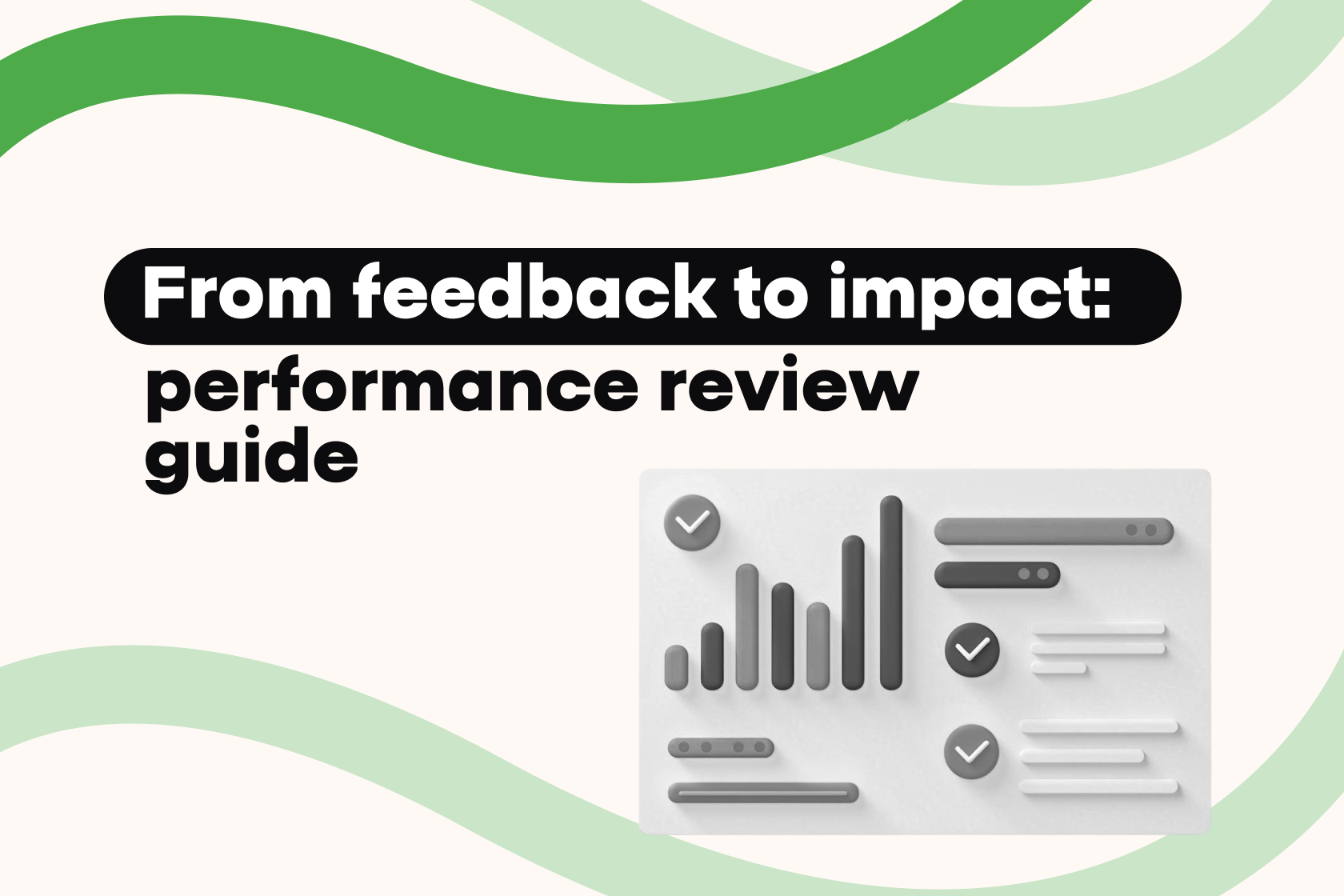Traditional performance reviews often feel like a bureaucratic checkbox. And for good reason: according to Gallup, only 14% of employees strongly agree that performance reviews help them grow.
Companies that invest in regular, personalized, and strategically aligned feedback get much more in return — higher retention, motivation, and engagement. In those organizations, performance reviews are not dreaded meetings on the calendar — they’re part of the growth culture.
In this guide, we’ll explore how to build a performance review process that actually works.
Companies that invest in regular, personalized, and strategically aligned feedback get much more in return — higher retention, motivation, and engagement. In those organizations, performance reviews are not dreaded meetings on the calendar — they’re part of the growth culture.
In this guide, we’ll explore how to build a performance review process that actually works.
What Is a Performance Review in 2025?
A performance review is a structured conversation between a manager and an employee, where they reflect on the past period, exchange feedback and set direction and goals for the future.
But modern reviews are more than just "evaluations" — they are:
When done well — and paired with metrics and personalization — performance reviews become essential to talent development.
But modern reviews are more than just "evaluations" — they are:
- A tool for aligning with OKRs and KPIs
- A moment to strengthen soft skills
- A way to understand employee motivation
When done well — and paired with metrics and personalization — performance reviews become essential to talent development.
Why Performance Reviews matter
The core goals of performance reviews are:
According to Leapsome, companies with regular, high-quality reviews are 21% more likely to achieve their business goals on time.
- Growth and development: identifying strengths and improvement areas
- Goal alignment: linking personal contributions to team and company goals
- Recognition: celebrating wins and progress
- Transparency: creating space for honest discussion
- HR analytics: forming a data base for L&D, retention, and career planning
According to Leapsome, companies with regular, high-quality reviews are 21% more likely to achieve their business goals on time.
How often should you conduct Performance Reviews?
Annual reviews no longer cut it. A more flexible system:
Tip: Combine quarterly reviews with continuous feedback tools (like 1:1s, shout-outs or real-time KPI comments).
- Quarterly reviews: brief and focused — perfect for OKR-driven teams
- Biannual reviews: deeper analysis of soft/hard skills
- Monthly check-ins: help maintain momentum and motivation
Tip: Combine quarterly reviews with continuous feedback tools (like 1:1s, shout-outs or real-time KPI comments).
Types of Performance Reviews
Choose or combine the following formats based on your culture and team needs:
- Manager-led reviews — classic 1:1 conversations
- Self-assessments — powerful tool for self-awareness and ownership
- 360-degree feedback — insights from peers, reports, and supervisors
- Project-based reviews — evaluation based on outcomes of key projects
- Pulse reviews — quick, regular feedback snapshots
Who’s involved in the process?
A good performance review isn’t a one-person act — it’s a collaborative process:
- The employee — not just the subject, but an active participant through self-review
- The manager — facilitator, coach and feedback partner
- HR — process owner, ensuring fairness and consistency
- Colleagues — in 360° formats, add valuable context and perspective
How to run a Performance Review that actually works
1. Prepare
2. Conduct the meeting
3. Close the loop
📌 For goal-setting, see “How to use OKRs and KPIs together”
- Gather KPIs, OKRs, peer feedback
- Review past goals
- Ask the employee for a self-assessment
2. Conduct the meeting
- Start with achievements
- Discuss improvement areas using real examples
- Encourage open discussion: "What matters to you? What’s blocking you?"
3. Close the loop
- Set 2–3 new goals or development areas
- Log all outcomes in your performance system
- Schedule a follow-up check-in
📌 For goal-setting, see “How to use OKRs and KPIs together”
How to avoid bias in reviews
Common biases include:
To reduce bias:
- Recency bias — overemphasizing recent performance
- Halo effect — one trait coloring the full picture
- Similarity bias — favoring people who feel like us
To reduce bias:
- Use standardized templates and rating scales
- Include multiple sources of feedback
- Train managers to recognize bias
- Use AI tools to flag inconsistent language or evaluations
How AI is changing Performance Reviews?
AI isn’t here to replace managers — but it makes their job easier:
- Trend analysis: who’s improving, who’s stuck?
- Bias detection: spotting language or patterns that need attention
- Automation: collecting data, sending reminders, summarizing feedback
- Personalization: recommending learning paths or identifying workload issues
Your Performance Review checklist: before, during, after

A great performance review isn’t a task — it’s a conversation that builds trust, boosts motivation, and links personal growth to company success.
Don’t be afraid to adapt your format, ask better questions, or experiment with feedback tools. Just remember: performance reviews should help people move forward — not just get judged.
Don’t be afraid to adapt your format, ask better questions, or experiment with feedback tools. Just remember: performance reviews should help people move forward — not just get judged.
